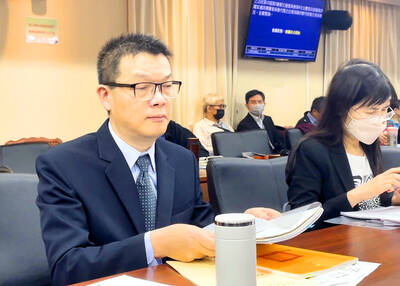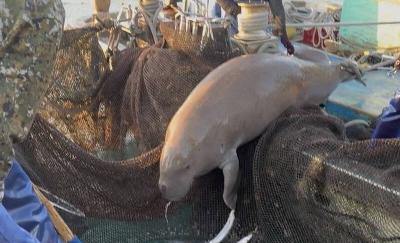A Taiwanese medical research team said that it has developed an index of five critical-risk factors used to predict the risk of developing liver cancer from hepatitis C in a five-to-5 year period.
Advancing Clinical Treatment of Liver Disease director and National Taiwan University Hospital Medical Department physician Kao Jia-horng (高嘉宏) said the prevalence of hepatitis C is about 4 percent in Taiwan — higher than in China, Japan, South Korea, New Zealand and Australia — with about 400,000 to 600,000 cases nationwide.
Hepatitis C is transmitted primarily by blood-to-blood contact, such as through unprotected sexual intercourse, tattoos, needle sharing, surgery, blood transfusion and acupuncture; and about 50 percent of patients with acute hepatitis C develop a chronic infection, he said.
If hepatitis C patients develop cirrhosis of the liver, about 30 percent are likely to suffer from hepatic failure within 10 years, and about 1 to 4 percent develop liver cancer every year, Kao said.
There is no vaccine for hepatitis C, Kao added.
The research team conducted a follow-up study on 1,095 hepatitis C patients over 15 years and identified five factors that contribute a patients’ risk of developing liver cancer — age, liver function index (alanine aminotransferase, ALT), virus genotype, viral load and the degree of liver fibrosis.
Team member and assistant professor at National Yang Ming University Institute of Clinical Medicine Lee Mei-hsuan (李美璇) said patients above 40 years of age, with higher ALT and hepatitis C viral load, more severe liver fibrosis and genotype 1 face greater risk of developing liver cancer and that the index model has a precision of about 70 percent.
The degree of liver fibrosis has the highest association with the risks of developing liver cancer, she said, adding that hepatitis C can be treated and cured, especially with new oral medicines developed to reduce viral load and slow the development of liver fibrosis, but patients are advised to make follow-up visits to doctors regularly.

‘DENIAL DEFENSE’: The US would increase its military presence with uncrewed ships, and submarines, while boosting defense in the Indo-Pacific, a Pete Hegseth memo said The US is reorienting its military strategy to focus primarily on deterring a potential Chinese invasion of Taiwan, a memo signed by US Secretary of Defense Pete Hegseth showed. The memo also called on Taiwan to increase its defense spending. The document, known as the “Interim National Defense Strategic Guidance,” was distributed this month and detailed the national defense plans of US President Donald Trump’s administration, an article in the Washington Post said on Saturday. It outlines how the US can prepare for a potential war with China and defend itself from threats in the “near abroad,” including Greenland and the Panama

The High Prosecutors’ Office yesterday withdrew an appeal against the acquittal of a former bank manager 22 years after his death, marking Taiwan’s first instance of prosecutors rendering posthumous justice to a wrongfully convicted defendant. Chu Ching-en (諸慶恩) — formerly a manager at the Taipei branch of BNP Paribas — was in 1999 accused by Weng Mao-chung (翁茂鍾), then-president of Chia Her Industrial Co, of forging a request for a fixed deposit of US$10 million by I-Hwa Industrial Co, a subsidiary of Chia Her, which was used as collateral. Chu was ruled not guilty in the first trial, but was found guilty

DEADLOCK: As the commission is unable to forum a quorum to review license renewal applications, the channel operators are not at fault and can air past their license date The National Communications Commission (NCC) yesterday said that the Public Television Service (PTS) and 36 other television and radio broadcasters could continue airing, despite the commission’s inability to meet a quorum to review their license renewal applications. The licenses of PTS and the other channels are set to expire between this month and June. The National Communications Commission Organization Act (國家通訊傳播委員會組織法) stipulates that the commission must meet the mandated quorum of four to hold a valid meeting. The seven-member commission currently has only three commissioners. “We have informed the channel operators of the progress we have made in reviewing their license renewal applications, and

A wild live dugong was found in Taiwan for the first time in 88 years, after it was accidentally caught by a fisher’s net on Tuesday in Yilan County’s Fenniaolin (粉鳥林). This is the first sighting of the species in Taiwan since 1937, having already been considered “extinct” in the country and considered as “vulnerable” by the International Union for Conservation of Nature. A fisher surnamed Chen (陳) went to Fenniaolin to collect the fish in his netting, but instead caught a 3m long, 500kg dugong. The fisher released the animal back into the wild, not realizing it was an endangered species at